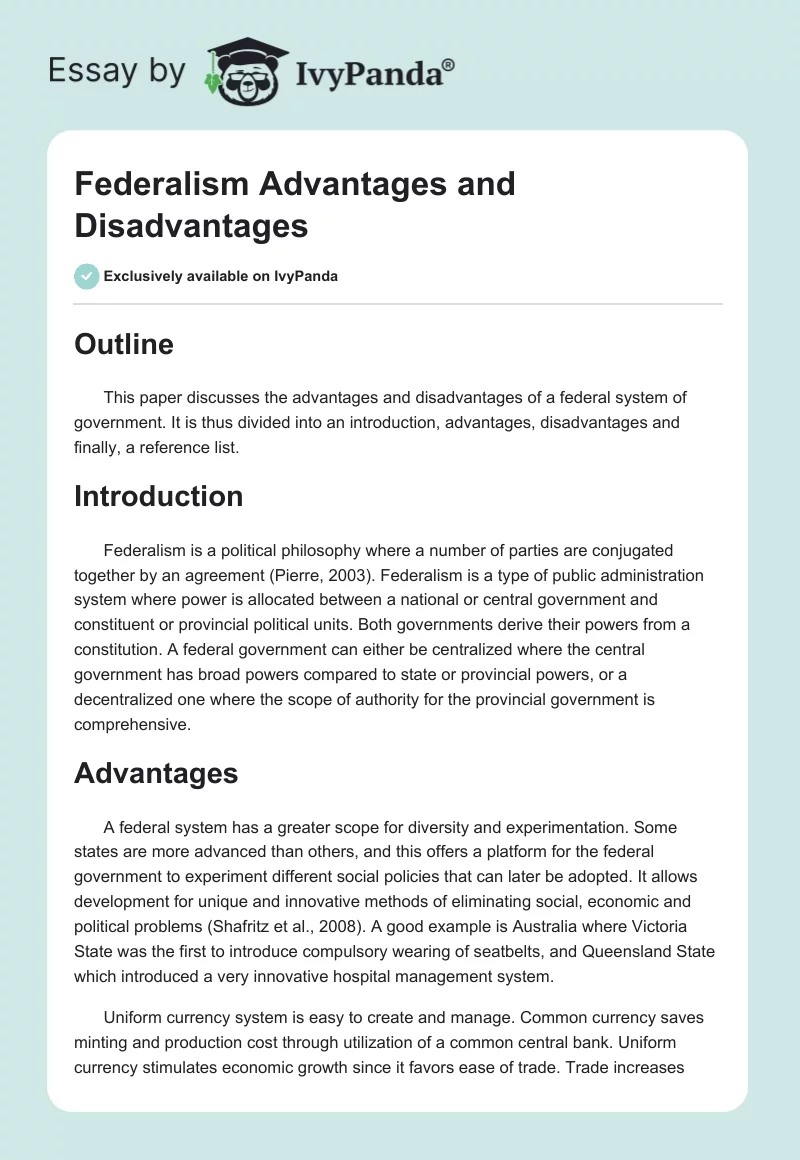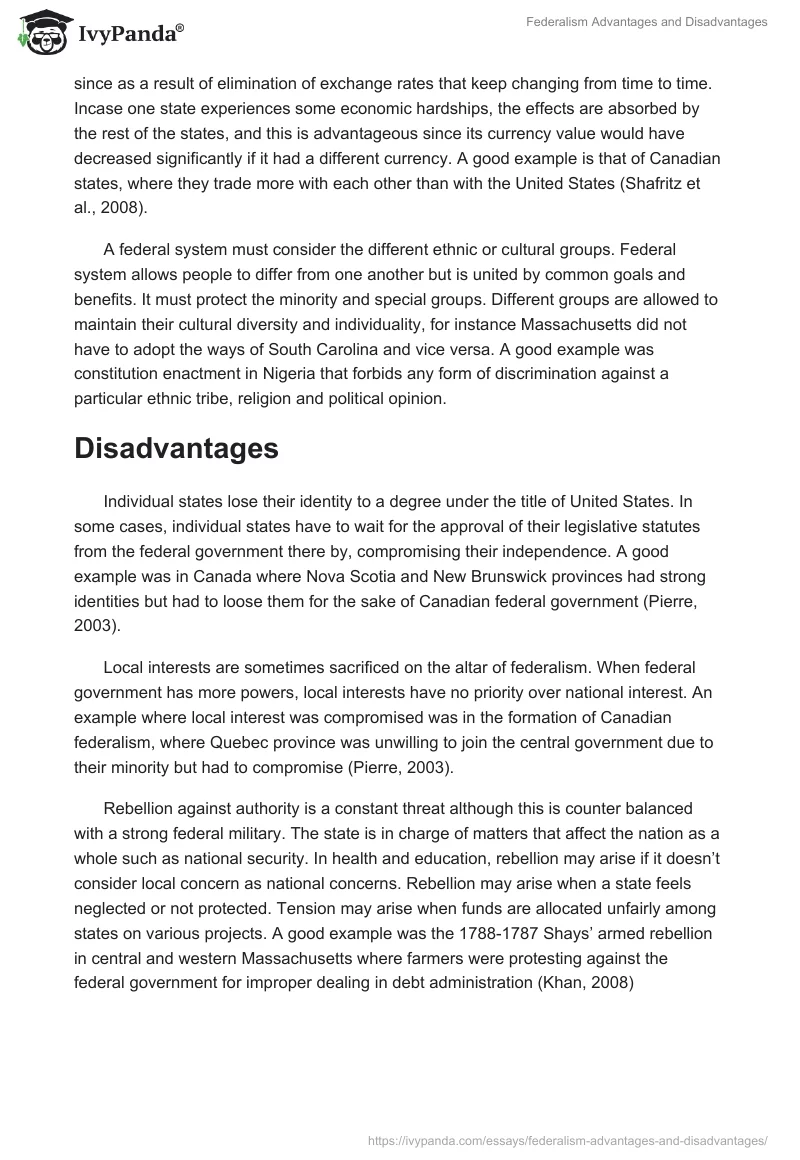Outline
This paper discusses the advantages and disadvantages of a federal system of government. It is thus divided into an introduction, advantages, disadvantages and finally, a reference list.
Introduction
Federalism is a political philosophy where a number of parties are conjugated together by an agreement (Pierre, 2003). Federalism is a type of public administration system where power is allocated between a national or central government and constituent or provincial political units. Both governments derive their powers from a constitution. A federal government can either be centralized where the central government has broad powers compared to state or provincial powers, or a decentralized one where the scope of authority for the provincial government is comprehensive.
Advantages
A federal system has a greater scope for diversity and experimentation. Some states are more advanced than others, and this offers a platform for the federal government to experiment different social policies that can later be adopted. It allows development for unique and innovative methods of eliminating social, economic and political problems (Shafritz et al., 2008). A good example is Australia where Victoria State was the first to introduce compulsory wearing of seatbelts, and Queensland State which introduced a very innovative hospital management system.
Uniform currency system is easy to create and manage. Common currency saves minting and production cost through utilization of a common central bank. Uniform currency stimulates economic growth since it favors ease of trade. Trade increases since as a result of elimination of exchange rates that keep changing from time to time. Incase one state experiences some economic hardships, the effects are absorbed by the rest of the states, and this is advantageous since its currency value would have decreased significantly if it had a different currency. A good example is that of Canadian states, where they trade more with each other than with the United States (Shafritz et al., 2008).
A federal system must consider the different ethnic or cultural groups. Federal system allows people to differ from one another but is united by common goals and benefits. It must protect the minority and special groups. Different groups are allowed to maintain their cultural diversity and individuality, for instance Massachusetts did not have to adopt the ways of South Carolina and vice versa. A good example was constitution enactment in Nigeria that forbids any form of discrimination against a particular ethnic tribe, religion and political opinion.
Disadvantages
Individual states lose their identity to a degree under the title of United States. In some cases, individual states have to wait for the approval of their legislative statutes from the federal government there by, compromising their independence. A good example was in Canada where Nova Scotia and New Brunswick provinces had strong identities but had to loose them for the sake of Canadian federal government (Pierre, 2003).
Local interests are sometimes sacrificed on the altar of federalism. When federal government has more powers, local interests have no priority over national interest. An example where local interest was compromised was in the formation of Canadian federalism, where Quebec province was unwilling to join the central government due to their minority but had to compromise (Pierre, 2003).
Rebellion against authority is a constant threat although this is counter balanced with a strong federal military. The state is in charge of matters that affect the nation as a whole such as national security. In health and education, rebellion may arise if it doesn’t consider local concern as national concerns. Rebellion may arise when a state feels neglected or not protected. Tension may arise when funds are allocated unfairly among states on various projects. A good example was the 1788-1787 Shays’ armed rebellion in central and western Massachusetts where farmers were protesting against the federal government for improper dealing in debt administration (Khan, 2008)
Reference
Khan, H. A. (2008). Introduction to Public Administration New York: University Press of America.
Pierre, J. (2003). Handbook of Public Administration. New York: Sage publications.
Shafritz, J., Russel, E. W. and Borick, C. (2008). Introducing public administration. (Ed) London: Longman.


